Karnataka Photographer Works For 3 Years, Transforms Barren Acre to Thriving Forest
It all began when Pompayya noticed the scrubby patch of land on the other side of the canal, that bordered his property, lie empty and transform into a general purpose dumping ground.
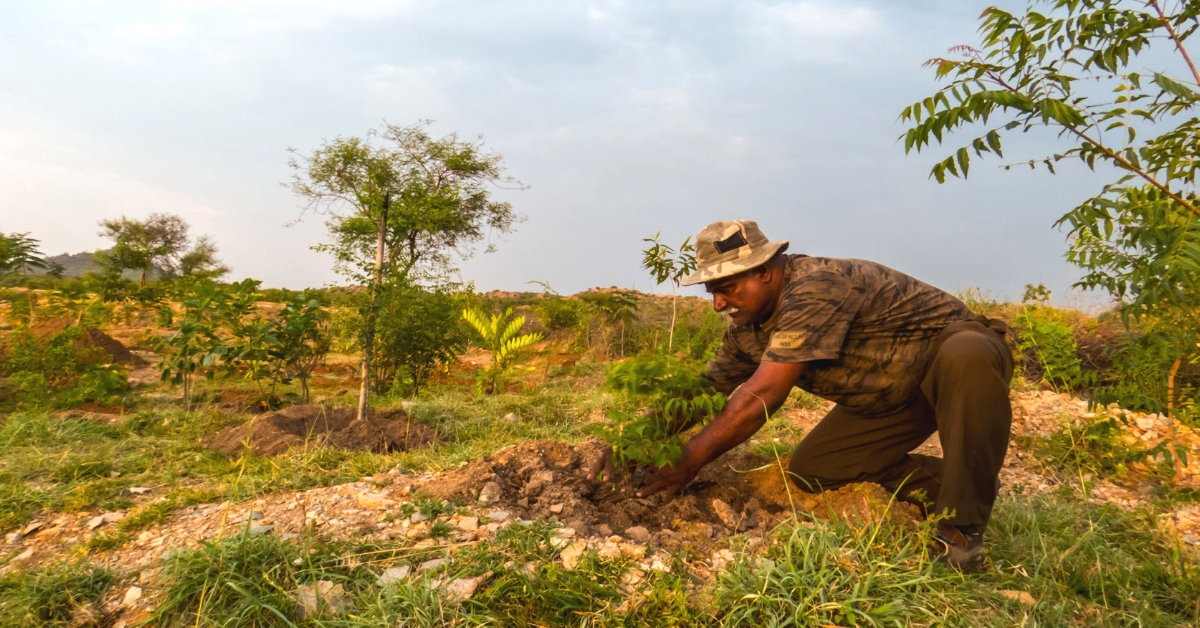
When I planted the first 50 saplings, I hoped that if even two of them survived, my work would prove significant. But fortunately, every single one of them found their footings. And three years later, over 800 trees stand tall in my forest!
These are the words of Pompayya Malemath, a wildlife enthusiast from Hospet in Karnataka, whose tireless efforts transformed a barren patch of rubbish-filled land to a thriving forest, as he says in just three years!
Adjacent to a high-level canal (HLC) near Kamalapur, 11 kilometres from Hospet and right next to his own property, this patch of green is a ray of sunshine for environment conservationists across the world.
A wildlife photographer and tour operator by profession, Pompayya’s fascination with wildlife and plants began at an early age.
Fascination turned to passion when he signed up as a volunteer at the Daroji Sloth Bear sanctuary, a step that paved the way for the conservationist in Pompayya to sprout wings.

“During this time, I’d done all kinds of odd jobs, including carrying camera equipment, and in the process, learnt a lot including the names of all animal and plant species existing in the region. Credit for this goes to the wildlife enthusiasts and researchers at the sanctuary, whose passion and commitment for the cause of conservation inspired me to walk the same path,” says the 50-year-old to The Better India.
It all began when Pompayya noticed the scrubby patch of land on the other side of the canal, that bordered his property, lie empty and transform into a general purpose dumping ground. He felt an urge to rejuvenate the area by planting trees.
So he wrote to the Tungabhadra Board – seeking permission to do so.
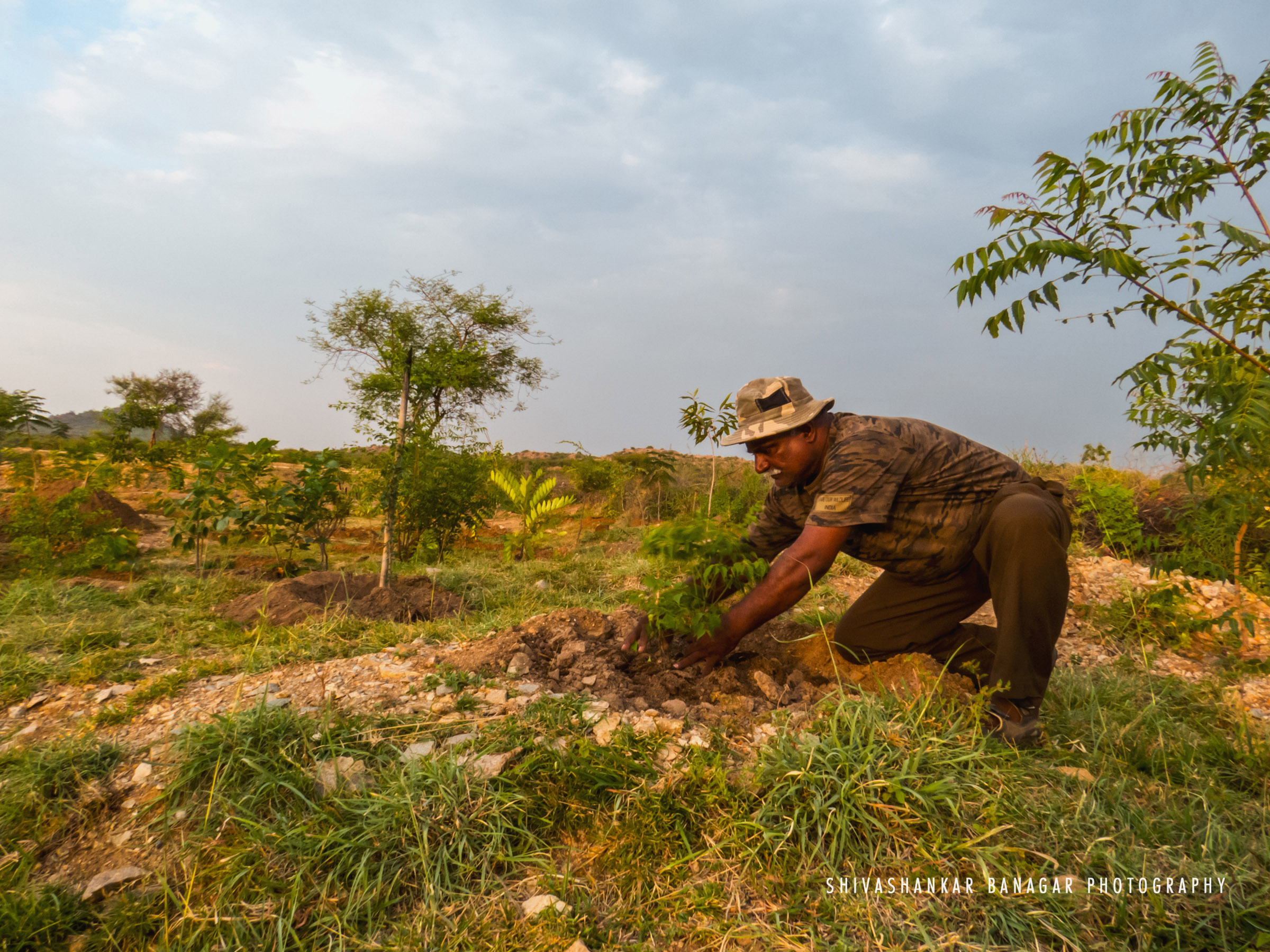
“The idea was accepted by the Board—albeit on the condition that I couldn’t claim ownership over this patch as it belonged to the state. This was not a concern in my mind. Even my property, right next to the empty land, wasn’t fertile enough for regular farming activities,” he remembers.
Pompayya used his own plot for agroforestry, planting saplings there with the hope of growing trees that could be harvested for their fruit or wood. This knowledge came in handy when he decided to transform the land next door.
Pompayya confirmed he had not gotten any commercial gains from the empty land so far – treating it purely as a restoration effort.
“Maybe in a few years, some harvests can be sold. But my efforts weren’t centred on these gains. I just wanted to give back to the nature that has given us everything and planting trees seemed the best way to do so,” he says.
He began by planting native species like coconut, neem and papaya trees. When he planted the first fifty saplings, the nature of the land made him hope that even if two out of these survived, his efforts weren’t wasted.
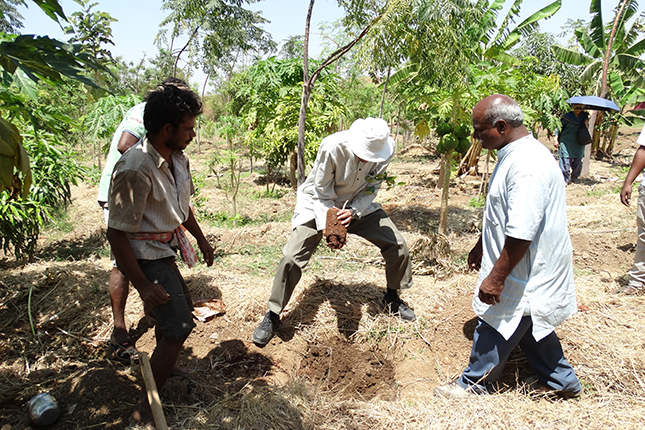
Fortunately, all of these saplings survived and that boosted Pompayya’s spirits greatly.
“I started out by first clearing the debris that people have been dumping on the plot. Since the region was known for its aridity, I had to survey the entire patch and soil quality to zero down on areas that showed potential. Once that was achieved, I marked down areas and with the help of my family members and friends, I dug two-foot trenches and filled it with good soil from the surroundings before getting on with the planting,” he explains.
Being an elected representative in his Panchayat, he began raising awareness about the need for conservation in his village as well. This got him in touch with the forestry department. Moved by his dedication, officials helped Pompayya by supplying him with saplings for free.
From Teak, Silver Oak and Melia Dubia (Malabar Neem), Pompayya also made sure to include fruit varieties like Mango and Guava, shady tree types like Singapore Cherry as well as native plants like wild Jasmine, Jamun and Amla in both plots – his own and the government’s plot.
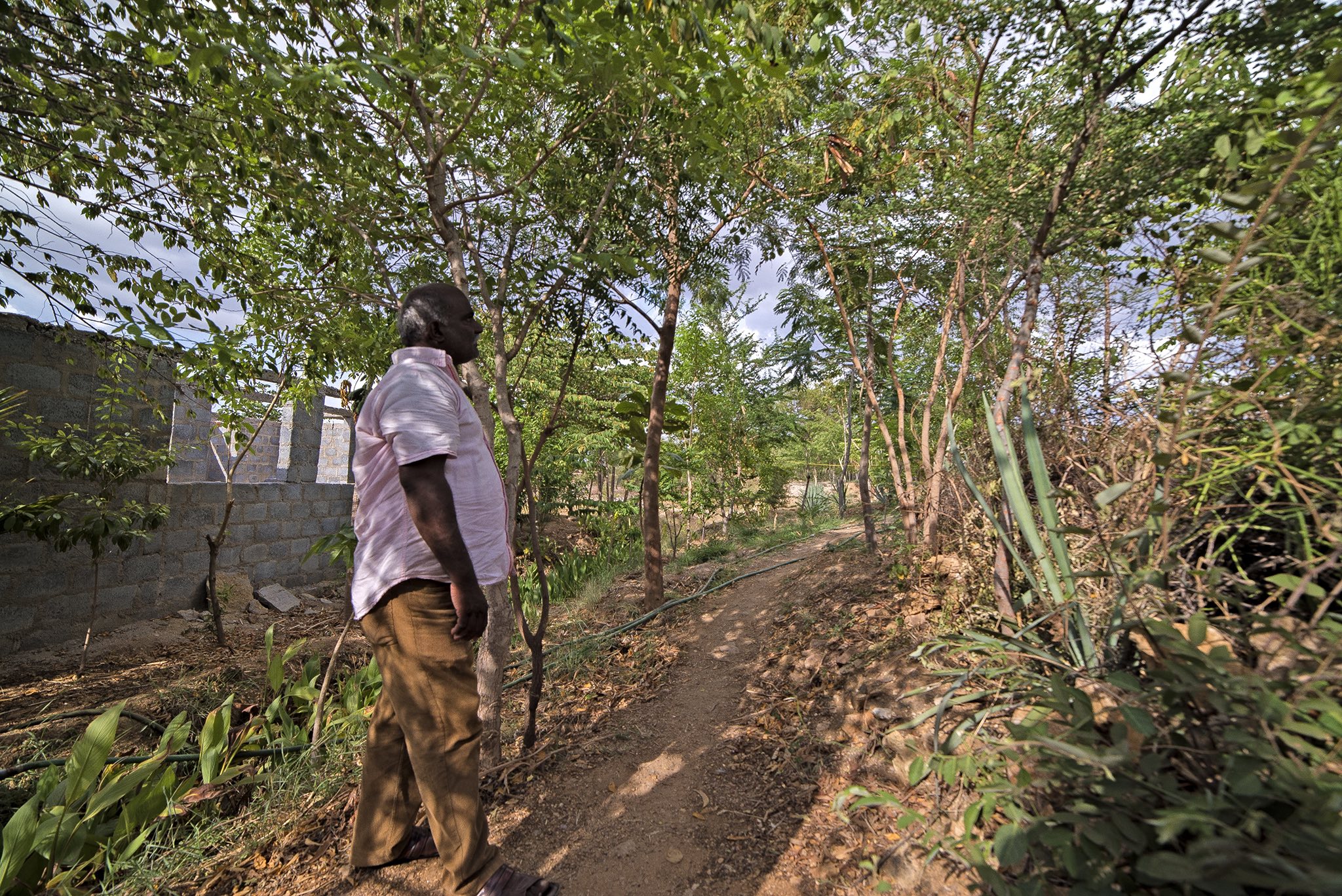
As for water for all of these trees, Pompayya fondly attributes his friend and neighbour Manjunath, who had volunteered to supply water for the saplings from his own borewell.
“We have about 800 trees here today, which together have recharged the groundwater table in the area over the years. I’ve made water holes in the land that do not dry up even in summers. About 70 species of birds, as well as animals like sloth bear, leopard, civet cat and the black-naped hare, have been sighted here. You can see the impact for yourself!” proudly adds Pompayya.
Interestingly, Pompayya has spent little over Rs 3 lakh from his own pocket over the entirety of three years – and that includes the amount he has paid in procuring manure for his trees.
One could say that Pompayya has been quite wise in all his conservational efforts. A prime example of his vision is how he managed to work out an innovative solution in a tricky situation.

“There was a small crack in the canal from which water would seep out intensively into the land with the onset of monsoon. When I reported this glitch to the concerned authorities, I got a weak response. That’s when I thought of routing this water that was getting wasted unnecessarily for a better purpose—a recharge pond,” he says.
Pompayya has been maintaining this water body as a pond, in which he had introduced fishes gradually. A true moment of euphoria had been when he began noticing tortoises coming and settling in this pond—something that had never happened before!
Building a mini ecosystem of its own, Pompayya shares that pond has managed to sustain itself throughout the year, even during the months when the canal runs dry.
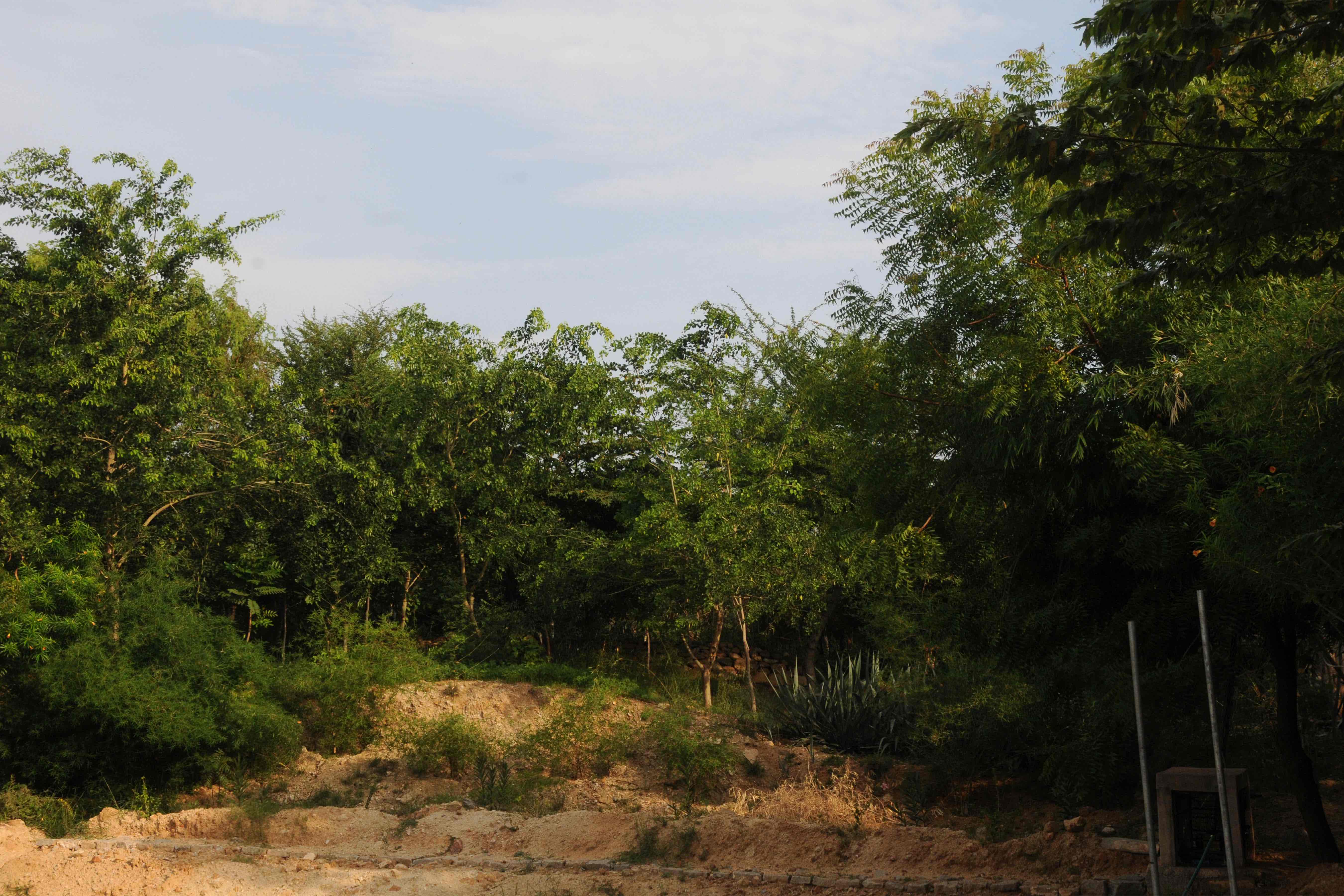
To anyone who wishes to pursue environment conservation, there is only one thing Pompayya has to say.
You may also like: Giving Up The Gun, These Ex-Militants Grew a Lush Forest on Barren Land In Just 10 Years!
“Planting lakhs of trees and leaving it to fend for itself is not how it works. Like raising one’s children, one needs to dedicatedly invest their time and efforts to nurture the saplings until they mature. I would suggest that selecting native saplings or ones that are attuned to similar climatic conditions is the best shot. Whether you plant one or a hundred trees, you should do it sensibly and most importantly, with care,” he concludes.
(With inputs from Sriram Aravamudan)
(Edited by Vinayak Hegde)
Like this story? Or have something to share?
Write to us: [email protected]
Connect with us on Facebook and Twitter.
If you found our stories insightful, informative, or even just enjoyable, we invite you to consider making a voluntary payment to support the work we do at The Better India. Your contribution helps us continue producing quality content that educates, inspires, and drives positive change.
Choose one of the payment options below for your contribution-
By paying for the stories you value, you directly contribute to sustaining our efforts focused on making a difference in the world. Together, let’s ensure that impactful stories continue to be told and shared, enriching lives and communities alike.
Thank you for your support. Here are some frequently asked questions you might find helpful to know why you are contributing?


This story made me
- 97
- 121
- 89
- 167











